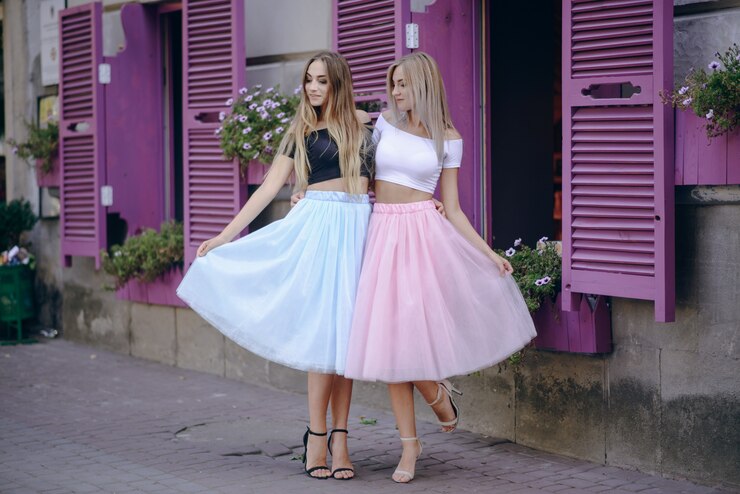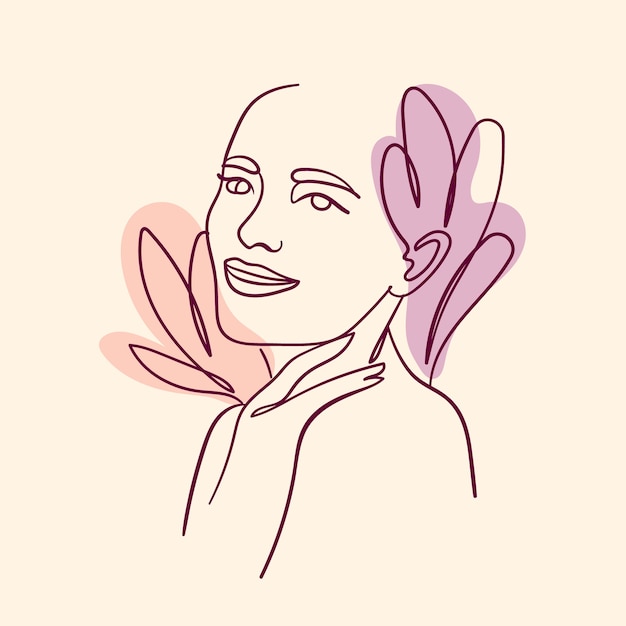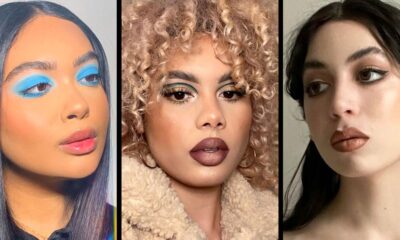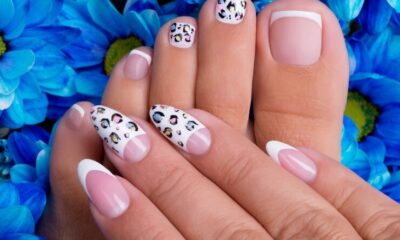Fashion
Lolita Dress: A Timeless Fashion Statement


Fashion
What Number of Teeth Craft the Most Alluring Smile?
A smile transcends languages as an emblem of warmth, joy, and assuredness. But what nuances render a smile truly captivating? One pivotal element lies in the count of teeth revealed during a grin. This piece delves into the artistry of dental allure, explores the ideal tooth count for the most alluring smile, and unpacks the dynamics shaping our perceptions of beauty.
The Craftsmanship Behind a Smile: The Building Blocks of Elegance
An enchanting smile weaves together multiple elements: the alignment of teeth, symmetry, gum exposure, and, significantly, the number of teeth unveiled. Though the human mouth houses 32 teeth, including wisdom teeth, few claim the spotlight when smiling. Typically, the 10–12 front teeth—incisors, canines, and premolars—are the key architects of a smile’s magnetism.
The Influence of Tooth Visibility on Smile Appeal
The Primacy of Central Teeth
The upper central incisors, often the stars of a smile, hold considerable sway over its aesthetic balance. Research points to smiles showcasing 8–10 upper teeth as most universally admired, as this range strikes a harmonious blend of symmetry and proportion.

Harmony in Alignment and Spacing
A smile brims with charm when its teeth are uniformly spaced, aligned, and proportionate. Crowded or misaligned teeth can fracture the flow, drawing the eye away from its cohesive allure.
The Elegance of the Smile Line
The “smile line” emerges as the curve formed by the upper teeth’s edges, mirroring the contour of the lower lip. A naturally arched and symmetrical smile line amplifies facial equilibrium and grace.

Cultural and Psychological Dimensions of Smile Perception
Cultural Variations
The appeal of a smile can vary across cultures. In some traditions, expansive grins revealing more teeth embody openness and friendliness, whereas understated smiles with fewer teeth evoke sophistication and poise in others.
The Psychological Imprint
Smiles that modestly reveal a select number of teeth often convey authenticity and trustworthiness. A radiant, teeth-filled grin communicates confidence and optimism, universally recognized as magnetic traits.
The Optimal Tooth Count for an Irresistible Smile
Experts in aesthetic dentistry commonly agree: that exposing 8–10 upper teeth represents the golden ratio for an alluring smile. Why does this specific range work so well?
- Symmetry: A balanced smile, displaying an equal number of teeth on both sides, resonates universally as pleasing.
- Moderation: Overexposed teeth can appear overly zealous, whereas fewer visible teeth may suggest reticence.
- Proportionality: This tooth count complements facial contours, enriching the overall aesthetic harmony.

What Governs Tooth Visibility in Smiles?
A confluence of factors influences how many teeth are visible when someone smiles:
- Facial Structure and Jaw Morphology:
The orientation of the jawbones dictates the natural exposure of teeth during a smile. Longer faces may display more teeth, whereas shorter ones might reveal fewer. - Lip Shape and Fullness:
Full lips tend to obscure more teeth, while thinner lips may showcase a broader array. - The Passage of Time:
Aging introduces changes, such as receding gums or worn teeth, affecting how many teeth are showcased. - Dental Health:
The vibrancy of one’s smile hinges on healthy teeth. Imperfections like stains or gaps detract from its allure, while dental enhancements like whitening and orthodontics elevate the visual appeal.
The Artistry of Dentistry in Elevating Smiles
Modern dentistry equips individuals with tools to sculpt smiles that exude perfection. Some transformative solutions include:
- Orthodontics:
Aligners and braces correct misalignments, ensuring an optimal tooth count is prominently displayed. - Cosmetic Enhancements:
Treatments such as veneers and bonding refine tooth shape, size, and alignment, crafting an impeccable grin. - Gum Contouring:
Excess gum visibility can disrupt the balance of a smile. Contouring procedures recalibrate this ratio, spotlighting teeth.
Natural Approaches to Enhance Smile Appeal
For those seeking to refine their smiles organically, consider these strategies:
- Oral Hygiene Vigilance:
Daily brushing, flossing, and regular dental visits fortify dental health and enhance aesthetic appeal. - Lip Care:
Well-moisturized, exfoliated lips frame a smile beautifully. Lip balms and gentle scrubs maintain softness and luster. - Facial Exercises:
Strengthening the facial muscles can improve smile symmetry, subtly increasing tooth visibility. - Nutrient-Rich Diet:
Consuming calcium and vitamin-laden foods preserves tooth strength and prevents discoloration, sustaining a radiant smile.

Conclusion
A captivating smile is an interplay of symmetry, tooth visibility, and robust dental health. While 8–10 visible upper teeth typically define universal appeal, individual facial nuances, and preferences hold equal sway. Embracing proper oral care or seeking professional enhancements can help anyone unveil a smile that exudes confidence, charm, and timeless allure.
Fashion
Do Press on Nails Ruin your Natural Nails?

A Frequently Asked Question Is Nail Pressing Damaged Your Nails Artificial nails have carved a niche in the beauty industry offering a quick and easy solution to achieving salon-worthy nails from the comfort of your home. This article sheds light on this topic and provides a comprehensive analysis. My advice is to not apply artificial nails until you have consulted an experienced specialist.
Do Press On Nails Ruin Your Natural Nails?
The good news is that press-on nails can be applied with a soft adhesive and removed without the use of tonsils. Can be applied to nails, unlike acrylic or gel nails which require harsh chemicals to apply and remove.

How long do these dents last?
Although dents don’t appear immediately after removal, Dr. Dana says they usually appear one to two months after trauma. She assures us that dents aren’t usually permanent considering that every few weeks I get press-ins my thumbnail has multiple dents from the cuticle to the tip of my nail.
Tips to apply & make them last
We want to make sure that press-in gels are more delicate than gels and acrylics. Gel has some suggestions for your press-in nails.
Preparation
Make sure the nail plate is super clean. Any lingering oil on the nails can prevent the adhesive from bonding. Use a critical pusher after finishing and shaping your nails. to gently push back the cuticles and buff the natural surface of the nail.
Choose press nails that fit your natural nails well, and avoid overlaps or gaps. Most brands will also include different sizes in their press nails, so get a tip from your nail before starting the process. It becomes very easy.
Apply
Steal says to avoid too much glue as it can make the press prone to twisting and lifting. One thing and one layer is enough.
If you have adhesives, peel one off the tip and stick it to your nail plate for 30 seconds firmly, then peel off the backing to reveal the other side.
Firmly press down on your natural nail for 30 seconds to ensure a secure bond, says Chori.
Easy to maintain
Remember that soft glues are water soluble and any glue can dissolve. After applying the press-in, you may want to avoid water for a few hours because the glue dries if it is being used.
You’ll want to avoid soaking your nails in water, especially hot water, as this helps prevent the adhesive from loosening.
If the press-in lifts a little, don’t panic. Just apply a small amount of glue to the area and reattach it as reattachment becomes difficult. Don’t wait for it to completely fall off.
Avoid activities that put a lot of stress on the fingernails, such as vigorous typing or using your fingernails to open cans. Be as gentle as possible with these tips.
WHAT CAUSES THE DAMAGE?

When you seal your nails under the artificial nails, the glue-up is firmly bonded to the natural nail. Technically, there is no moisture, and they arrive in a dry, airtight environment for up to two weeks to cure. You won’t like it. Glue-up nails win the battle if you forcefully lift and don’t follow through. It usually peels off the top layer, leaving your nail surface uneven.
How to Use Press-On Nails Safely
Keep these tips in mind to enjoy compressive gratis without damaging your natural nails.
Appropriate application
Start with clean, dry natural nails Use a good adhesive and press them evenly to avoid pressure points Choosing quality press-in adhesives can make a difference
Remove carefully
Press the edges gently before lifting. Soak your nails in warm soapy water to soften the adhesive. Avoid pulling too hard. Now let the nails dry.
:max_bytes(150000):strip_icc()/053023-press-on-nails-lead-cbb7dd107f744aceaad2fff7af1a3a83.jpg)
Take breaks
Give your natural nails room to breathe between applications Keep hydrated and moisturized for maximum health Exposing your nails to the first rays of the sun in the morning will keep your nails beautiful and healthy.
Conclusion
These are unlike other forms of short nails, which can cause damage if applied too long or improperly. If you want to get or maintain beautiful, healthy nails, you need to be careful about applying them properly, removing them safely, and generally following basic nail care instructions.
Hope you will benefit from this information. If you like this information, please comment.
Fashion
Ross Dress for Less: Your Ultimate Guide to Bargain Shopping

Ross Dress for Less is a staple in the bargain retail market, recognized for its huge determination of brand-name objects at extensively decreased prices. With over 1,600 places throughout the United States, Ross attracts a wide variety of customers searching for prices in clothing, domestic décor, footwear, and more. Shoppers frequently evaluate it as a “treasure hunt” The place offers are hidden at some point in the aisles. But how precisely did Ross emerge as the go-to keep for low-cost quality?
The History and Growth of Ross Stores
Founded in 1950, Ross began as a small branch shop in San Bruno, California. The first Ross Dress for Less place opened in 1982, shifting the center of attention to cut-price retail. This transition proved immensely successful, leading to speedy growth throughout several states. Today, Ross operates in forty states, making it one of the greatest off-price outlets in the U.S.
Ross’s increased approach entails a dedication to turning in exquisite objects while reducing expenses by slicing down operational costs. This approach, coupled with an extensive selection of items and a loyal patron base, has allowed Ross to thrive in a rather aggressive market.
Why Shop at Ross Dress for Less?
Ross has placed itself as a pinnacle preference for budget-conscious shoppers. But what makes Ross such a special buying experience?
Discounted Brand Names: Shoppers can discover well-known manufacturers and fashion designer labels at costs usually 20-60% decrease than at common retail stores.
Variety: From apparel and add-ons to domestic items and seasonal décor, Ross provides a large range of merchandise in each department.
Constant Inventory Rotation: Ross shops get hold of new shipments more than once times a week, which means there’s continually something clean on the shelves.
Ross Dress for Less appeals to those searching to stretch their bucks except sacrificing quality. Shoppers frequently be aware that objects like clothier handbags, stylish footwear, and elegant domestic décor make Ross a one-stop-shop for low-priced finds.

Popular Departments at Ross Dress for Less
Ross’s enchantment comes from its sizeable variety of departments, catering to distinctive consumer needs. Here’s a nearer appearance at some of the predominant sections you’ll stumble upon at Ross.
Women’s Apparel
Women’s apparel is a key enchantment at Ross, presenting the whole thing from everyday casuals to nighttime wear. With dresses, tops, jeans, and expert attire, the women’s area ensures there’s something for each style and style. Seasonal trends, as properly as timeless basics, are available, making it handy to locate alternatives for any occasion.
Men’s Fashion
The men’s part at Ross gives fashionable and realistic garb for all seasons, along with suits, informal shirts, jeans, activewear, and outerwear. With foremost manufacturers at bargain prices, guys can locate long-lasting and stylish portions besides overspending. From workwear necessities to weekend casuals, Ross has men’s trends covered.
Kids’ Clothing
The children’s branch points garb for infants, toddlers, and teens alike. Parents can locate the whole lot from college uniforms to vacation outfits, all at decreased prices. With youngsters continuously outgrowing their clothes, Ross gives a budget-friendly answer for dads and moms in search of high-quality at decreased prices.
Footwear for the Whole Family
Ross offers an extensive variety of footwear for men, women, and children, including sports shoes, dress shoes, sandals, and boots. Brands like Nike, Adidas, and Puma regularly appear on the shelves, giving customers access to athletic and fashion-forward sneakers at discounted prices.
Home Décor and Essentials
Beyond clothing, Ross additionally has a magnificent determination of domestic décor and essentials. Here you’ll locate low-priced alternatives for every room in the house, from throw pillows and rugs to kitchen devices and bedding. Ross’s domestic area approves clients to spruce up their residing areas barring breaking the bank. Seasonal domestic décor gadgets are particularly popular, as they permit buyers to beautify cheaply for vacation trips like Christmas, Halloween, and Thanksgiving.
Finding High-Quality Brands at a Discount
One of the key points of interest of Ross is the possibility of discovering high-quality, name-brand merchandise at a fraction of the cost. How does Ross acquire this? The reply lies in its shopping for the model. Ross purchases overstock and out-of-season gadgets without delay from manufacturers, permitting them to provide good-sized reductions on manufacturers that would generally be out of attain for budget-conscious consumers.
Shoppers regularly locate famous labels like Calvin Klein, Ralph Lauren, and Michael Kors blended in with lesser-known brands. This aggregate of brand-name and price objects ensures that each go-to to Ross can yield a hidden gem for those inclined to search.
Shopping Tips for Ross Dress for Less
Shopping at Ross can be overwhelming for first-timers, however, these pointers can assist you make the most of your visit:
Shop Early in the Day: New shipments generally arrive in the mornings, so early risers may also have get entry to to the first-class determination earlier than objects are picked over.
Visit Multiple Times: Since stock modifications frequently, it’s well worth checking in commonly for new finds.
Inspect Items Carefully: Some objects might also be discounted due to minor imperfections. Look carefully to make certain you are cozy with any achievable flaws.
By keeping these recommendations in mind, customers can maximize their probability of discovering superb gadgets at unbeatable prices.

The “Treasure Hunt” Shopping Experience
The thrill of discovering offers is what continues consumers to return to Ross. Unlike common shops with predictable inventory, Ross affords a special “treasure hunt” buying experience. Customers don’t understand precisely what they’ll find, which makes every buying time out exciting. Bargain hunters love this unpredictability, as it allows them to discover shocking offers on dressmaker items, family essentials, and more.
This treasure hunt enchantment is a sizeable section of Ross’s manufacturer identity. Shoppers are drawn to the pleasure of doubtlessly discovering a luxurious object at a fraction of its unique cost, making it a fun buying vacation spot alternatively than a chore.
How Ross Dress for Less Stands Out from Competitors
Ross operates in an aggressive area with quite a few commonplace cut-price retailers, such as TJ Maxx, Marshalls, and Burlington. However, Ross’s dedication to offering the lowest fees besides compromising nice has helped it stand out. Unlike many of its competitors, Ross no longer provides an online buying platform, which may also in the beginning appear like a drawback however without a doubt enhances the in-store treasure hunt experience.
Additionally, Ross’s operational approach emphasizes minimalism, assisting them decrease prices and preserving costs compared to competitors. For those looking for a one-of-a-kind purchasing journey with reliable discounts, Ross has emerged as a pinnacle choice.
Seasonal Shopping at Ross: What to Expect
Throughout the year, Ross Dress for Less affords seasonal objects that cater to distinctive vacations and events. Here’s what you can assume throughout some purchasing seasons:
Spring: Floral dresses, gardening tools, and out-of-door furnishings begin performing in stores.
Summer: Swimsuits, seashore gear, and summertime clothing grow to be hot-ticket items.
Fall: Back-to-school supplies, relaxed sweaters, and autumnal domestic décor fill the shelves.
Winter: Festive decorations, present sets, and iciness put on make Ross a famous vacation spot for vacation shopping.
With every season, Ross refreshes its stock to replicate contemporary trends, making it handy to locate low-cost and on-trend objects at some stage in the year.
The Benefits of Shopping at Ross vs. Other Discount Retailers
When in contrast to different bargain stores, Ross affords a special set of advantages:
Lower Average Prices: With a dedication to low working costs, Ross constantly provides decreased expenditures than most competitors.
Exclusive In-Store Experience: In the absence of an online platform capability Ross prioritizes the in-store experience, growing a feeling of urgency for in-person purchases.
Broad Range of Departments: From apparel to domestic goods, Ross caters to almost every purchasing want in one place.
Ross Dress for Less stands out as the best choice for clients searching to shop cash except for compromising on quality.
People also ask
-

 Skin9 months ago
Skin9 months agoNatural Oil-Free Face Moisturizer Reviews & Buyers Guide
-

 Hair3 weeks ago
Hair3 weeks agoDoes a Flat Iron Kill Lice? Fact or Myth?
-

 Hair9 months ago
Hair9 months agoDoes a Flat Iron Kill Lice? Fact or Myth?
-

 Skin8 months ago
Skin8 months agoAbout Face Beauty: Tips for Enhancing Your Natural Beauty
-

 Hair9 months ago
Hair9 months agoFunction of Beauty: Personalized Hair Care for Your Unique Needs
-

 Skin8 months ago
Skin8 months agoBeautiful Nails: Tips and Tricks for Healthy and Gorgeous Nails
-

 Hair9 months ago
Hair9 months agoTitanium Flat Iron vs. Ceramic
-

 DIY Cosmetics8 months ago
DIY Cosmetics8 months agoEmpire Beauty School:
